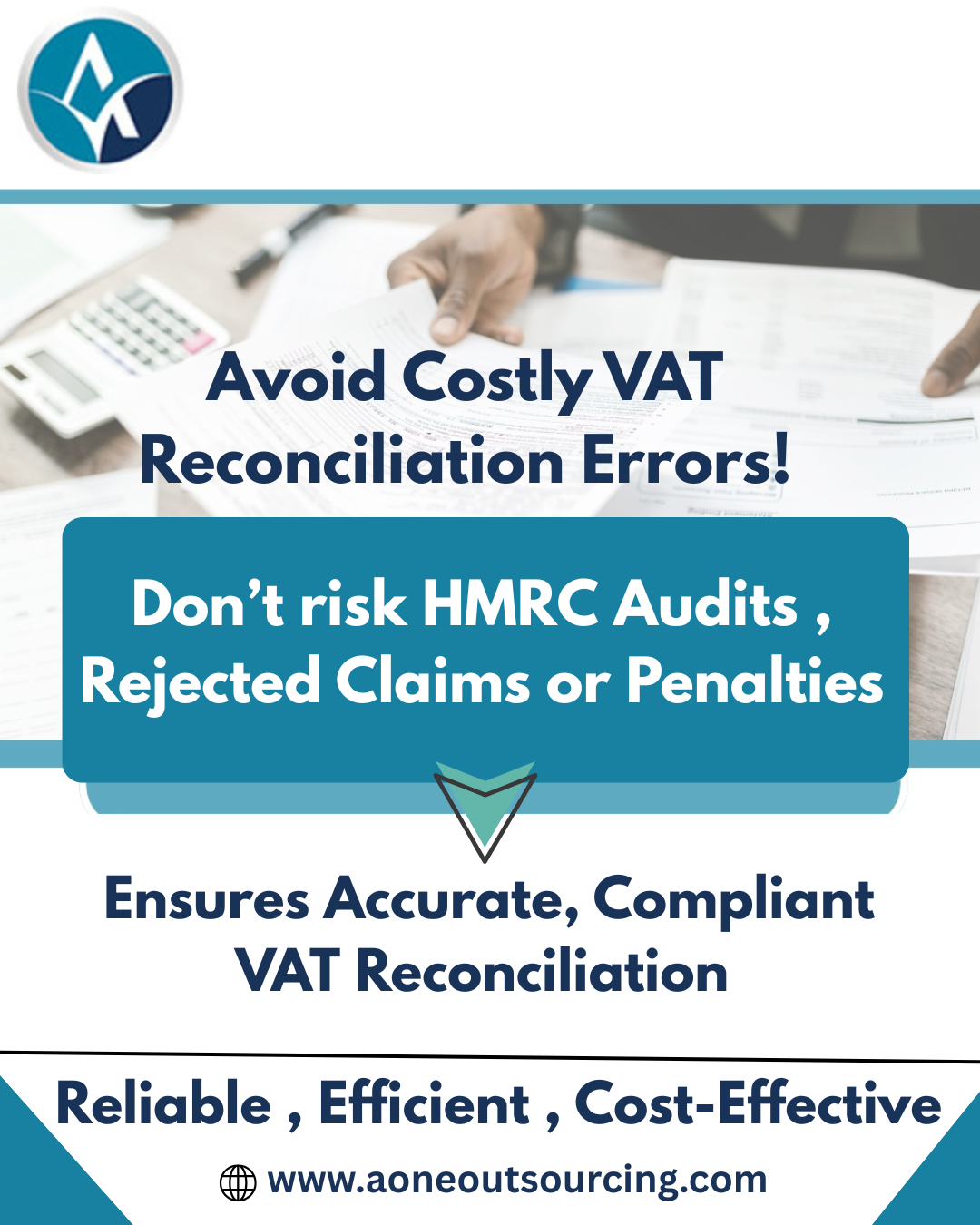
Managing VAT (Value Added Tax) is a crucial part of running a business in the UK. One of the most important processes in VAT compliance is VAT reconciliation—ensuring your financial records match HMRC’s requirements. Without proper VAT reconciliation, businesses risk errors, penalties, and cash flow issues.
Many companies now opt for VAT outsourcing services to streamline this process, ensuring accuracy and compliance. In this guide, we’ll explore what VAT reconciliation entails, why it’s essential, and how outsourcing can help UK businesses stay on top of their VAT obligations.
What is VAT Reconciliation?
VAT reconciliation is the process of comparing your business’s financial records (sales, purchases, and VAT returns) with bank statements and HMRC filings to ensure consistency. It involves:
-
Matching sales invoices with VAT returns
-
Verifying purchase records against expense claims
-
Identifying discrepancies and correcting errors
Proper VAT reconciliation helps businesses avoid underpayments, overclaims, and potential HMRC audits.
Why is VAT Reconciliation Important for UK Businesses?
1. Compliance with HMRC Regulations
HMRC requires businesses to maintain accurate VAT records. Failure to reconcile VAT properly can lead to:
-
Penalties and fines
-
Increased scrutiny from HMRC
-
Legal complications
2. Accurate Financial Reporting
Mismatched records can distort financial statements, leading to:
-
Incorrect profit calculations
-
Cash flow mismanagement
-
Poor business decisions
3. Avoiding Costly Errors
Manual reconciliation is prone to mistakes. Common errors include:
-
Duplicate entries
-
Missing invoices
-
Incorrect VAT rates applied
How to Perform VAT Reconciliation Efficiently
Step 1: Gather All Financial Documents
-
Sales invoices
-
Purchase receipts
-
Bank statements
-
Previous VAT returns
Step 2: Compare Records with VAT Returns
-
Ensure sales figures match reported output VAT
-
Verify purchase invoices against input VAT claims
Step 3: Identify and Resolve Discrepancies
-
Investigate mismatched amounts
-
Correct errors before filing returns
Step 4: Use Accounting Software or VAT Outsourcing Services
Automated tools reduce human error, while VAT outsourcing services provide expert support for complex reconciliations.
Challenges in Reconciliation & How to Overcome Them
1. High Volume of Transactions
Businesses with numerous transactions struggle with manual reconciliation.
✅ Solution: Use cloud accounting software (e.g., Xero, QuickBooks) or hire VAT outsourcing services for scalability.2. Complex VAT Rules
Different goods/services have varying VAT rates (standard, reduced, zero-rated).
✅ Solution: Stay updated on HMRC guidelines or consult a VAT specialist.3. Missing or Incomplete Records
Lost invoices or unrecorded transactions lead to reconciliation gaps.
✅ Solution: Implement a digital filing system and regular audits.Benefits of Outsourcing VAT Reconciliation
Many UK businesses now rely on VAT outsourcing services for:
✔ Expert Accuracy – Professionals ensure error-free reconciliations.
✔ Time Savings – Frees up internal resources for core business tasks.
✔ Cost Efficiency – Reduces the need for in-house VAT specialists.
✔ HMRC Compliance – Minimizes audit risks with up-to-date filings.By outsourcing, businesses gain peace of mind while maintaining full compliance.
Final Thoughts
VAT reconciliation is not just a compliance task—it’s a financial safeguard for UK businesses. Whether you handle it in-house or use VAT outsourcing services, accuracy and timeliness are key.
For expert assistance, explore Aone Outsourcing’s Services to ensure seamless VAT compliance.
-